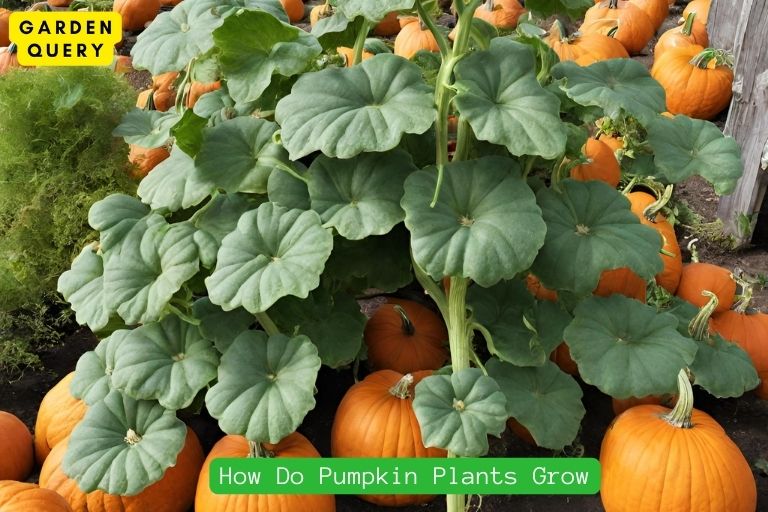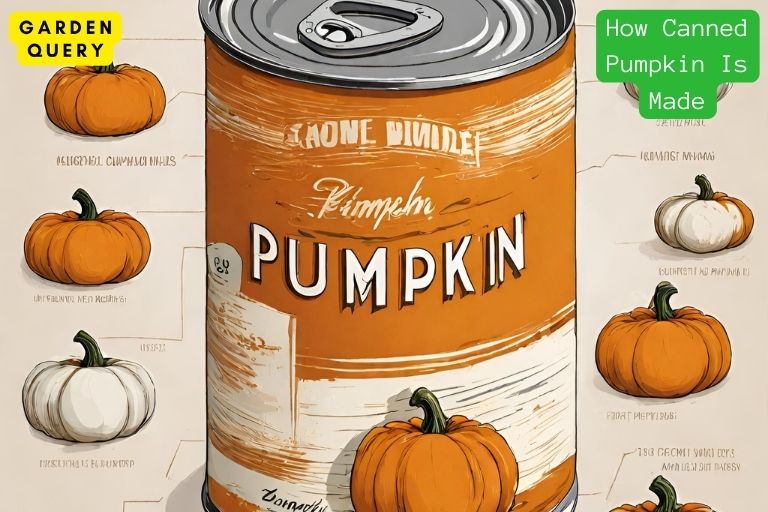What’s In Pumpkin Puree?
Pumpkin puree typically contains only one ingredient: cooked and mashed pumpkin flesh.
Pumpkin puree, often utilized in cooking and baking, is made by cooking and mashing pumpkin flesh into a smooth, thick consistency. It’s distinct from pumpkin pie filling, which includes additional sweeteners and spices.
The puree contains a high concentration of essential nutrients, such as fiber, vitamins A and C, and beta-carotene. Its neutral taste and creamy texture make it a versatile ingredient, commonly used in various recipes, from soups and sauces to desserts like pies and muffins.
Key Takeaway
Composition of Pumpkin Puree
Pumpkin puree is a versatile ingredient that adds a delightful flavor and texture to various dishes. Understanding the composition of pumpkin puree can help you appreciate its nutritional benefits and culinary uses.
Pumpkin puree is derived from the flesh of mature pumpkins, which are generally harvested in the fall. It is made by cooking pumpkin pieces and then blending or mashing them into a smooth consistency. The characteristic orange color of pumpkin puree comes from its high content of carotenoids, specifically beta-carotene, which is a precursor to vitamin A.

Apart from being rich in vitamin A, pumpkin puree is a good source of fiber, vitamin C, potassium, and iron. It is low in calories and fat, making it a healthy addition to your diet. The fiber in pumpkin puree aids digestion and promotes a feeling of fullness, making it suitable for weight management.
Pumpkin puree can be used in a variety of recipes, including soups, sauces, desserts, and baked goods. Its natural sweetness and smooth texture make it a perfect ingredient for pies, muffins, smoothies, and pancakes. Additionally, it can be a substitute for oil or butter in certain recipes, adding moisture and a subtle pumpkin flavor.
While pumpkin puree typically does not contain added sugars or artificial preservatives, it is important to read the label when purchasing canned versions. Some canned pumpkin puree may be labeled as “pumpkin pie filling,” which often includes added sugars and spices.
To make your own pumpkin puree at home, choose a fresh, ripe pumpkin and cut it into chunks. Remove the seeds and stringy pulp, then roast the pumpkin until it becomes soft. Once cooled, scrape out the flesh and blend or mash it until smooth. Homemade pumpkin puree allows you to control the ingredients and ensure its freshness.
In conclusion, pumpkin puree is a nutrient-rich ingredient derived from the flesh of mature pumpkins. Its composition includes high levels of carotenoids, fiber, vitamins, and minerals. Its versatility in cooking makes it an excellent addition to both savory and sweet recipes. Whether you choose canned or homemade pumpkin puree, incorporating it into your diet can enhance the flavor and nutritional value of your meals.
Versatility in Cooking
Pumpkin puree is a versatile ingredient that can be used in a variety of dishes, both sweet and savory. Its smooth and creamy texture, along with its natural sweetness, makes it a popular choice for many recipes.
In sweet dishes, pumpkin puree is commonly used in desserts such as pumpkin pies, cakes, muffins, and cookies. Its subtle pumpkin flavor adds depth and richness to these treats. You can also use it as a base for creamy puddings or smoothies.
But the versatility of pumpkin puree doesn’t stop at sweet dishes. It can also be incorporated into savory recipes to add a unique twist. It can be used as a base for soups, stews, and sauces, providing a creamy and velvety texture. Its natural sweetness helps balance out the flavors of savory ingredients, creating a harmonious and satisfying taste.
One popular savory dish that uses pumpkin puree is pumpkin risotto. The puree adds a creamy and velvety consistency to the rice, while the subtle pumpkin flavor complements the other ingredients, such as Parmesan cheese and sage. Pumpkin puree can also be used in pasta dishes, like pumpkin alfredo sauce or pumpkin-filled ravioli.
Additionally, pumpkin puree can be used in breakfast recipes, such as pumpkin pancakes or waffles. Its natural sweetness pairs well with warm spices like cinnamon and nutmeg, creating a delicious and comforting breakfast option.
Not only does pumpkin puree enhance the flavor and texture of dishes, but it is also packed with nutrients. It is a good source of antioxidants, vitamins A and C, and fiber. Incorporating pumpkin puree into your meals can help boost the nutritional value of your dishes, making them both delicious and nutritious.
In conclusion, pumpkin puree is a versatile ingredient that offers endless possibilities in the kitchen. Whether you’re making sweet desserts, savory dishes, or even breakfast recipes, the addition of pumpkin puree can elevate the flavor and texture of your creations. So why not explore the world of pumpkin puree and discover new and exciting dishes to enjoy?
Canned vs. Homemade
When it comes to pumpkin puree, you have two options: buying it canned or making it homemade. Let’s take a closer look at the differences between the two.
Canned Pumpkin Puree:
Canned pumpkin puree is a convenient option that is readily available in most grocery stores. It is made by cooking and pureeing pumpkin, which is then packed and sealed in cans. This means that it has a longer shelf life and can be stored in your pantry until you’re ready to use it.
One of the advantages of canned pumpkin puree is its consistent texture and flavor. The manufacturers ensure that each can of puree has a uniform consistency, making it ideal for baking. It is also convenient because it saves you time and effort since the pumpkin is already cooked and pureed. Canned pumpkin puree is a versatile ingredient that can be used in a variety of recipes, including pies, soups, bread, and muffins.
Homemade Pumpkin Puree:
Making pumpkin puree from scratch involves roasting and pureeing fresh pumpkin. While it may require a bit more effort, the results can be rewarding. Homemade puree has a fresher and more natural flavor compared to the canned variety. You have more control over the texture and can customize it according to your preferences.
The process of making homemade puree begins by selecting the right variety of pumpkin, such as sugar pumpkins or pie pumpkins, which are known for their sweet and creamy flesh. Once you have the pumpkin, you need to cut it into pieces, remove the seeds, and roast it in the oven until it’s soft and tender. After cooling, you can remove the flesh and puree it until smooth.
One of the benefits of making your own pumpkin puree is that you can avoid additives and preservatives that may be present in canned puree. It is a healthier option that allows you to have more control over the ingredients used. Additionally, homemade puree can be frozen and stored for later use, giving you the flexibility to enjoy the taste of pumpkin throughout the year.
Which One to Choose?Both canned and homemade pumpkin puree have their benefits and can be used in various recipes. If you’re looking for convenience and a consistent texture, canned pumpkin puree is the way to go. On the other hand, if you enjoy the process of cooking from scratch and want a fresher taste, homemade pumpkin puree is worth the effort.
Ultimately, the choice between canned and homemade pumpkin puree depends on your personal preferences, time constraints, and the specific recipe you’re making. Whichever option you choose, incorporating pumpkin puree into your cooking can add a delicious and nutritious twist to your dishes.
Nutritional Value
Pumpkin puree is not just a tasty ingredient to incorporate into your favorite recipes, but it also offers several nutritional benefits that can contribute to a healthy diet. Let’s explore the nutritional value of pumpkin puree.
Vitamins and Minerals: Pumpkin puree is a rich source of essential vitamins and minerals. It is particularly high in vitamin A, which is important for maintaining healthy vision and supporting the immune system. Additionally, it contains a good amount of vitamin C, which plays a role in collagen synthesis and boosting the immune system. Pumpkin puree also provides vitamins E and K, which support skin health and blood clotting, respectively. Furthermore, it contains minerals such as potassium, magnesium, and iron, which are essential for various bodily functions.
Fiber Content: Pumpkin puree is a great source of dietary fiber. Fiber is important for regulating digestion, promoting satiety, and maintaining a healthy gut. It helps prevent constipation and promotes regular bowel movements. Consuming foods high in fiber, like pumpkin puree, can also help in managing weight and controlling blood sugar levels.
Antioxidants: Pumpkin puree contains several antioxidants, including beta-carotene, which gives it its vibrant orange color. Antioxidants help protect the body against the damage caused by free radicals, reducing the risk of chronic diseases such as heart disease and certain types of cancer. These antioxidants also contribute to maintaining healthy skin by preventing oxidative stress.
Low in Calories and Fat: Pumpkin puree is a nutritious option that is relatively low in calories and fat. One cup of pumpkin puree contains around 80 calories and less than one gram of fat, making it an ideal ingredient for those watching their calorie and fat intake.
Versatile Ingredient: Beyond its nutritional value, pumpkin puree is a versatile ingredient that can be used in a variety of dishes. It is commonly used in baking, adding moisture and natural sweetness to cakes, muffins, and bread. You can also use pumpkin puree in soups, smoothies, and even savory recipes like pasta sauces and chili.
Incorporating pumpkin puree into your diet can offer numerous health benefits due to its nutritional value. Whether you enjoy it in sweet treats or savory dishes, pumpkin puree provides a tasty and nutritious addition to your meals.
Conclusion
In conclusion, pumpkin puree is a versatile and nutritious ingredient that can be a great addition to your kitchen pantry. It is made by cooking and pureeing pumpkin flesh, resulting in a smooth and thick consistency. Pumpkin puree is commonly used in baking, but it can also be used in various other dishes like soups, smoothies, and sauces.
When it comes to the nutritional value of pumpkin puree, it is packed with essential vitamins and minerals. It is a rich source of vitamin A, which promotes good vision and helps boost the immune system. Pumpkin puree is also a good source of fiber, potassium, and antioxidants.
In addition to its nutritional benefits, pumpkin puree adds a delightful flavor to recipes. Its natural sweetness and earthy taste make it a popular ingredient in a wide range of dishes. Whether you are making pumpkin pie, pumpkin bread, or a savory pumpkin soup, pumpkin puree brings a distinctive and comforting flavor to your creations.
It’s worth noting that pumpkin puree can be purchased pre-made from stores, but it is also easily made at home. Simply select a ripe pumpkin, remove the seeds and skin, and cook the flesh until tender. Then, puree the cooked pumpkin until smooth and creamy.
In summary, pumpkin puree is not only a delicious ingredient but also a nutritious addition to your diet. Its versatility allows you to get creative in the kitchen and explore various recipes. So next time you come across a recipe that calls for pumpkin puree, don’t hesitate to incorporate this flavorful and wholesome ingredient.
- Best Therapists In Dallas - February 1, 2024
- Holly Willoughby Husband: Holly Willoughby’s Love Story - January 30, 2024
- Holly Willoughby Dress: 5 Style Secrets and 7 Must-Know Career Milestones - January 30, 2024





